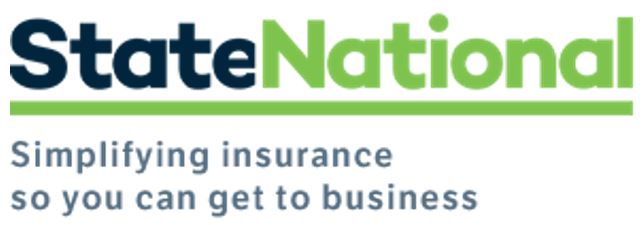
“State National certainly saves us time and money, because of the tracking they do on the insurance. That’s why we use them.”
~ Alan Meyer, President & CEO, 1st MidAmerica CU
Here at State National we are, naturally, advocates of the benefits of collateral protection insurance (CPI) for lenders, including comprehensive insurance tracking. After all, it’s what we’ve built our business around for almost 50 years, and we’ve seen it successfully manage risk for thousands of our clients.
But we also know that deciding how to safeguard your institution’s loan portfolio can seem like a complicated decision. In the midst of all the other duties and responsibilities of running your business, it can be tempting to go with the option that seems easiest on the surface. However, as with most things in life, there’s a lot more underneath it all than meets the eye.
There are a lot of factors in favor of a tracked CPI program that aren’t immediately obvious and can be all-too-easily overlooked — until a lender who chooses another kind of portfolio protection discovers the unintended (and potentially unpleasant and expensive) consequences that can often happen with self-insurance or blanket coverage and a lack of borrower insurance tracking.

“We’ve got to know what we have in our portfolio. We can’t just pray they have insurance, we have to take the responsibility to figure out what we’ve got. Now (with State National) we can worry about doing loans, doing the things we’re good at, versus the stuff that’s not fun on this end. That has been a huge benefit for us. I just don’t think anybody else out there can compete with what State National has as far as the product, the technology and innovation, and how many things are automated.”
~ Cory Rupp, Affinity Plus CU
Why a Tracked Portfolio Protection Program Is Better for Lenders
Lack of borrower insurance tracking has some side effects that aren’t always obvious at first glance. Here are some of the risks of a non-tracked program:
1. Increase in uninsured collateral and risk to the lender
Tracked programs encourage non-compliant borrowers to obtain their own insurance and the right kind of insurance, and to keep it in force. Considering that an average of 1 in 8 drivers in the U.S. is uninsured — reaching as high as 1 in 4 in some states — programs that don’t have a tracking component often find that the number of uninsured borrowers within their portfolio increases because there is no mechanism to resolve deficiencies.

“State National has saved us — literally — thousands of dollars. State National does a better job of identifying uninsured loans and a better job of working with our members.”
~ Bob Steensma, CEO, Five Star CU
2. Loss of claim dollars from standard insurance carriers
Without a tracked program, there is nothing to ensure a borrower will add your institution as lienholder and loss payee — which means that if a covered loss is incurred, the claim payment goes directly to the borrower. Unfortunately, in some cases, the borrower pockets the money instead of repairing the collateral, and there is no protection for the lender when this occurs. Tracking lienholder status is essential to ensure that if you need to repossess the vehicle, you will be compensated for the damaged collateral.

3. Increased charge-offs
Without the claims benefits a tracked program provides, your institution will likely see an increase in charge-offs. Our tracked programs reduce charge-offs by as much as 1/3, which means lenders can see an increase of as much as 50% in charge-offs when they move from a tracked program to another form of insurance.
4. Negative impact on overall borrower population
By tracking insurance on your entire portfolio and placing a policy only on those who do not have acceptable insurance, you are benefiting all of your borrowers as a whole. The average penetration rate (percentage of policies placed relative to the entire portfolio) of a tracked program is very low — meaning that the vast majority of your borrowers who are compliant and keep proper insurance coverage in place are not affected by these costs. And not only does reducing charge-offs and keeping your portfolio’s uninsured rates low benefit your borrowers as a group, it also helps your lending rates stay more competitive because your institution does not need to cover these charge-off costs (or premium costs for a blanket policy).
5. No protection of uninsurable borrowers
In some cases, borrowers are unable to obtain their own insurance due to poor driving history or other circumstances. A tracked program offers the ability (at the financial institution’s discretion) for physical damage coverage to be extended to these borrowers. That way, they can have the vehicle repaired and can continue driving it, enabling them to keep working and making their loan payments.
6. Loss of an early indicator of future delinquencies
Throughout our history we have seen that when a borrower drops insurance coverage, it can be a red flag indicating possible future delinquencies. Our tracked program and the extensive reporting it provides allows your collections department to be aware of potential future repayment issues. That way, they can get ahead of these situations proactively and work with the borrower to find ways to keep payments current. Early identification and action also reduce the risk posed by the diminishing value of the collateral, because early detection helps identify vehicles that need to be repossessed while the collateral still holds value, as opposed to later on when that value could drop significantly.
“In general, cost is the number one factor driving financial institutions to switch from blanket insurance to CPI. In addition to either passing costs through to borrowers or absorbing them, many institutions find they must raise rates regardless of claims, making them less competitive in the long run.”
~ Loren Shelton, Vice President of Insurance Solutions, State National Companies
“State National helps protect our portfolio, and at the end of the day, that helps our profitability.”
~ Mark Fessler, CEO, Pronto Finance














Facebook Comments